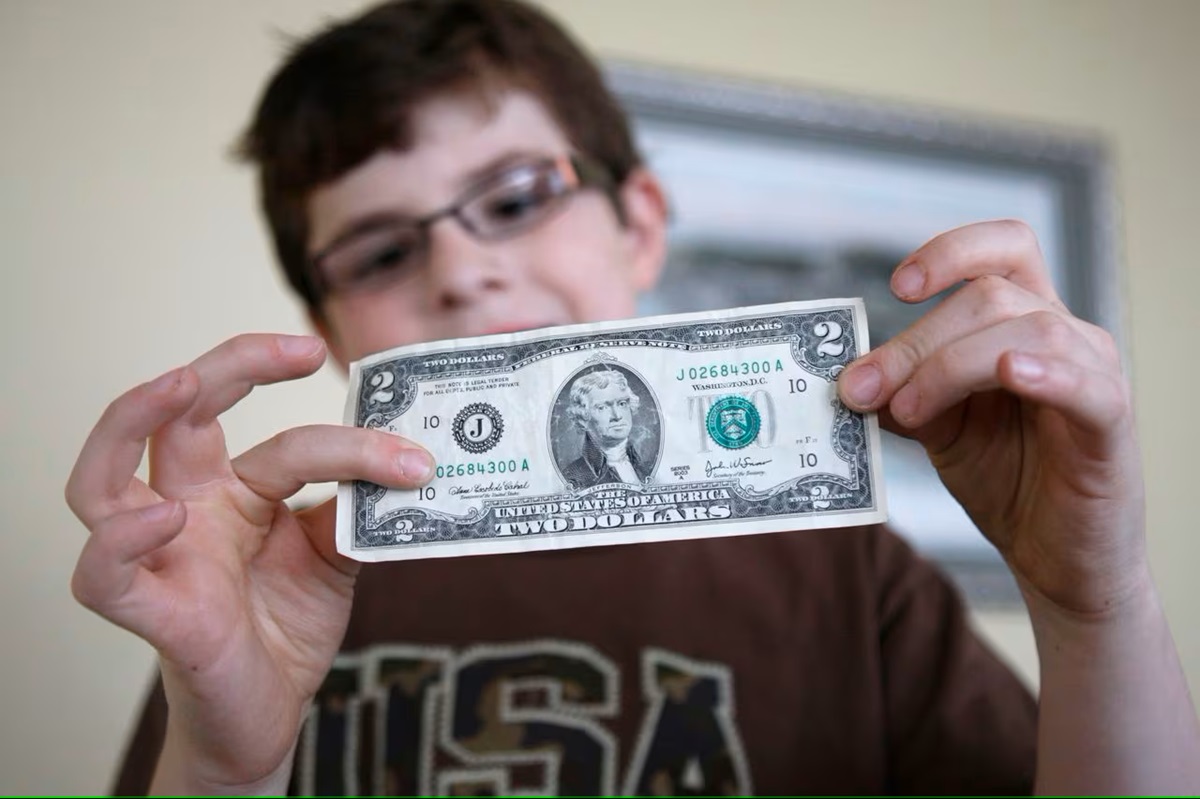News
Do You Have a US $2 Bill, It Could Be Worth $20,000.00

According to the US Currency Auctions, a U.S. $2 bill that features Thomas Jefferson, the third President of the United States could be worth a whopping $20,000.00. Turning $2 bill into $20,000 has never been easier, that is if you’re lucky enough to have one.
According to Heritage Auctions, one of the world’s top auction houses, some uncirculated U.S. $2 bills can be worth up to $20,000 depending on a few conditions. And it’s possible that you have one in your wallet or in your kitchen junk drawer.
Why? Because many of us are preoccupied with preserving these specific bills.
“Americans don’t spend $2 bills because they believe they are scarce.” “However, the numbers tell us a different story,” Heritage Auctions vice president Dustin Johnston told MarketWatch. “They’ve printed 100 million $2 bills in the last five years.” It’s a little strange that they don’t circulate and are retained as souvenirs. There are very few of them that have numismatic or collector value.”
Because there are so many $2 bills, chances are your own legal money in that denomination is worth face value. But it can’t hurt to see whether it’s worth more, right?
So, what distinguishes the $2 bills that may be valuable? It all comes down to three crucial factors: serial numbers, the date of printing, and the quality of the banknotes.
The serial number is the most important. It is normally printed on the left and right sides of the front of the bill, with a letter in the centre. “What we’re looking at is fancy serial numbers,” Johnston explained. “A 1976 $2 bill with serial number ‘1’ is worth $20,000 or more.” However, for the vast majority of those holding 1976 $2 bills, they are only of face value. There are very few that genuinely outperform their face value.”
Other valuable serial numbers include what collectors refer to as “solid” or “ladders.” Solid serial numbers have all the same digit, such as 88888888888, whereas ladder numbers include digits listed in ascending sequence, such as 12345678910.
And, as one might expect, older $2 bills are more scarce than younger ones. Collectors consider bills to be “older” if they are more than 100 years old.
“Aside from the fancy serial numbers, the majority of the value will be in the large size notes [from] 1918 and prior.” [The] 1918s are extremely prevalent. “They usually start around $80 to $100 and go up from there,” Johnston explained. “The more recent ones, the 1920s and beyond, well over 99% are going to be worth marginally over face value.”
However, it is not as simple as saying that the older the $2 bill, the more valuable it may be, because the amount of bills created in a given year and the overall number in circulation can both influence rarity.
The condition of a $2 note is the final important criterion to consider. A crumpled and shredded $2 bill from a high-value year, such as 1880, is less valuable than one in excellent condition. Banknotes, like other collectibles, can be graded and encapsulated to aid with preservation. Typically, notes and other artefacts sold at auction are graded.
“Grading can be costly; it can range from $20 to $30 per note.” “As a result, we don’t always have everything graded,” Johnston explained. “Many of the modern $2 bills, they can [be] crisp uncirculated and grade pretty high, but have marginal values, enough that they are not even worth being graded, so condition is not everything.”
There are various organisations that grade collectibles, including PCGS, PSA, and SGC.
Heritage Auctions offers free online appraisals where collectors can upload photographs to their website if they have any questions regarding the worth of their $2 bill or any other valuable banknote.
The United States $2 bill is a denomination of US currency depicting Thomas Jefferson, the third President of the United States, on the front and the signing of the Declaration of Independence on the back. It’s a rather rare denomination in circulation, and many Americans have never seen or used a $2 bill.
The $2 bill was originally issued in the United States in 1862, and it has undergone various design revisions since then. While it is still legal money, it is not as commonly circulated as bills in amounts such as $1, $5, $10, $20, or $100. As a result, some people regard $2 bills as novelty items or collectibles.
If you stumble across a $2 bill, it is still legal tender and can be used for transactions in the same way as any other US dollar. While they are less common in regular transactions, they can sometimes be received from banks or requested when withdrawing money from ATMs. Some people collect $2 notes because of their distinct status and patterns.






























